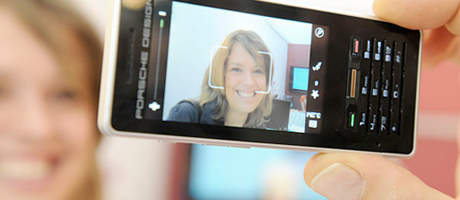Consumer Insight Study

Marketing researcher Robert Passikoff has been studying brand loyalty for 25 years. Here he discusses what drives innovation in the smart phone category and how consumers’ rising expectations challenge brands. We offer this column to use as you see fit, with proper attribution.
We speak to consumers about many categories and brands and generally they express the top-of-mind opinion that the technology brands, by creating innovation, create consumer desire for more technological innovation. OK, a bit circular, but truth is that’s only partially true.
Consumers have expectations about everything, especially technology these days, but most aren’t thinking bout the creation of the technology itself. They’re thinking about what they want – what’s out there that will provide them with what they expect. In most traditional research those expectations don’t show up with a big red arrow labeled, “MAKE ME THIS!” More often than not, real consumer expectations are unarticulated and emotional and you’ve got to do some drill-down and hard thinking to figure it all out.
Category Drivers, Key to Consumer Expectations
Looking at product category engagement drivers can help. They identify how consumers view the category and compare offerings in that category, and through those drivers consumer needs, desires and expectations are defined in the context of the category. Then technology takes over. Steve Jobs gets full credit for introducing the iPod, but it was consumers’ high level of expectations for a portable music device of elegant, organic design that made it so successful.
At rough count about four billion people have mobile phones and most have cameras built into them. Nowadays it’s hard to find a mobile phone that doesn’t have a camera. It wasn’t always that way, of course. The first mobile phones were mobile and phones. People were pretty delighted to be able to make calls without landlines at home or office, or coins in payphones. Manufacturers raced to do what they could to differentiate offerings, but most of that had to do with form – basic size (back then, smaller was deemed more desirable, but that’s not the case anymore given how tablets have affected the category and consumers), what the phone looked like, (black, white, or gray), whether it flipped open, where the buttons were located, Stuff like that. And sure, it was the manufacturer who had the chips that could add a camera, but in actuality it was consumers – more accurately, it was the consumers’ expectations that pointed the way to the addition of a camera. Here’s how:
Consumers Demand Cameras
Every product category has its own set of engagement drivers. Today, these drivers end up being more emotional than rational in structure, which is why, when correctly configured, marketers are able to predict how consumers will behave. If you measure the drivers correctly, they also identify expectation levels consumers hold for them. Brands that are able to better meet consumers’ expectations for the category drivers do better than those that don’t. And yes, expectations – particularly for the Ideal in a category – are high, usually much higher than brands can keep up, but that’s a good thing because if a brand pays attention to where expectations are or where they have risen significantly and are unfulfilled by players in the category, it’s like having a big, red arrow point out something that consumers are looking for and something brands should attend to.
And that’s what happened as regards cameras being added to mobile phones. Expectations for the mobile phone engagement driver, “Connectivity,” went through the roof. Now, if you viewed that upsurge from an entirely rational perspective (what most brands did at the time), their first notion had to do with figuring out how to achieve faster circuits or connections so calls would go through faster, thus providing better “connectivity.” Q.E.D.
Consumers Demanded ‘Connectivity’
As it turned out, consumers’ increase in expectations for connectivity was an emotional signal – a desire for more personal and more intimate connectivity. Those wacky consumers! What will they want next? And while it seems intuitively obvious now, the answer lay not in the verbal space, but in the visual realm – photographs. Think back. Wouldn’t it have been really cool to take a photograph with your phone and send it to someone right when you took it? To connect visually? Wouldn’t that be a lot better than speech or even text? Think about trying to describe the sunset on the Serengeti? Don’t they say a picture is worth a 1,000 nationwide airtime minutes, and comes with a whole lot of emotional satisfaction?
Sanyo was the first cellphone brand to add a cameral but, alas, the tech engineering process moves really quickly and once one brand does something “innovative,” competitors do it too. Literally days later phones re-configured as “camera phones” showed up in the marketplace. And so it went, but here’s where it gets tricky, very rational, and present day.
Rational vs Emotional Drivers
“Rational” is good when all a brand is dealing with is making something better than the competition. But given brands’ production capabilities, what delights consumers emotionally quickly becomes table stakes –something you need to have or your brand doesn’t get to play, i.e., compete in the category. And, like a poker game, the stakes keep rising, technology keeps ratcheting up and, sometimes, category dynamics are changed too. Witness phones with cameras. Or, in certain cases, cameras with phones. Who could have imagined a phone that would allow you to take photographs anyplace, in virtually any light, with regular and slow motion video, and a built in flash. Or in the case of Apple, two soft light LEDs.
In just about a decade smartphones have developed technologies that outshoot, digital point-and-shoot cameras. The smartphone-as-camera has become so ubiquitous that Brand Keys stopped measuring the digital camera category in our annual Customer Loyalty Engagement survey. Digital point-and- shoot camera sales are down nearly 50% in the first half of 2013. Who’s to blame? Well all the smartphone brands view the camera as a feature to help them differentiate themselves from one another. The new Lumia 1020 Windows Phone, for example, has a 41megapixel camera, the Samsung Galaxy S4 has a 13-megapixel camera, and while the iPhone 5s sports an 8-megapixel sensor.
Consumers’ expectations, on the other hand, while tangential, are focused elsewhere. In this category image quality and a desire for ultra-high sharpness with the ability to zoom and crop without the picture looking pixelated, and have functionalities they don’t have to look up in a manual that’s larger than the camera, I mean, smartphone itself. The new Nokia Lumia 1020 comes with apps that provide advanced setting for ISO, exposure and white balance, and can take 10 photos in under three seconds. And has a sensor that’s 0.42 inches diagonally (a dedicated point-and-shoot camera’s is about 0.3 inches, which may partially explain their drop in sales).
One other interesting element: when the ad introducing the new Lumia model first ran, consumers thought it was an ad for a new camera. . . that had mobile phone capabilities too. Perhaps that’s the next thing consumers will expect. Keeping an eye on those drivers and expectations provides a view through the lens of the consumer and can provide a brand with a high-definition view of the category before it’s completely developed.
Remember when your expectations were met knowing you could collect your e-mail, send a text message, or surf the Internet? Not anymore. Not ever again.
C6NJRXFRGJD6













